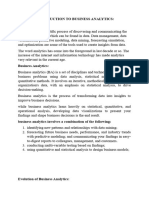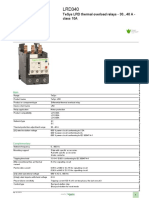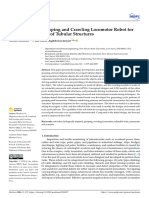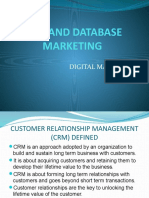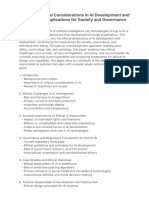BUSINESS ANALYTICS
Business analytics (BA) is the practice of iterative, methodical exploration
of an organizations data with emphasis on statistical analysis. Business
analytics is used by companies committed to data-driven decision making.
Business analytics is an investigation of past business performance to gain
insight and drive business planning.
Business analytics focuses on developing new insights and understanding
of business performance based on data and statistical method.
Analytics may be used as input for human decisions or may drive fully
automated decisions. Business intelligence is querying, reporting, online
analytical processing.
�TYPES OF BUSINESS ANALYTICS
Decisive analytics: supports human decisions with visual analytics
the user models to reflect reasoning.
Descriptive
Analytics:
Gain
insight
from
historical
data
with reporting, scorecards, clustering etc.
Predictive
analytics: predictive
modelling
using
statistical
and machine learning techniques.
Prescriptive analytics: recommend decisions using optimization,
simulation etc.
�HISTORY OF BUSINESS ANALYITCS
5000 BC: Grog uses two sticks and four rocks to graph
the upward trend in sales of his new invention, the wheel.
1969: Woodstock
ends
in
financial
disaster
after
organizers rely on spreadsheets to estimate attendance.
1976: Analysts predictions
that
this
will
be
the
bicentennial of the United States are fulfilled. World gains
sudden interest in the power of predictive analytics.
1976-TO PRESENT: SAS is formed and begins to give
businesses The Power to Know.
�JOB PROSPECT OF BUSINESS
ANALYSIS
Business analysis often specialize in a particular industry,
such as telecommunications or energy.
Evaluating and solving business challenges is the strong
suit of these professionals.
They collect, review and analyze information that enables
them to make sound recommendations.
New ways to control costs, increase efficiency or improve
sales, business analysts may research other companies and
industries to compare and measure performance guidelines.
�CHALLANGES FOR BUSINESS
ANALYITCS
Business analytics depends on sufficient volumes of high quality
data.
The difficulty in ensuring data quality is integrating and
reconciling data across different systems, and then deciding what
subsets of data to make available.
Analytics was considered a type of after-the-fact method
of forecasting consumer behaviour by examining the number of
units sold in the last quarter or the last year.
Now business analytics is becoming a tool that can
influence the outcome of customer interactions.
When a specific customer type is considering a
purchase, an analytics-enabled enterprise can modify
the sales pitch to appeal to that consumer.
This means the storage space for all that data must
react extremely fast to provide the necessary data in
real-time
�COMPETITION ON ANALYTICS
Thomas Davenport, professor of information technology and
management at Babson College states the characteristics of an
organization.
One or more senior executives who strongly advocate fact-based
decision making and, specifically, analytics.
Widespread use of not only descriptive statistics, but also
predictive modeling and complex optimization techniques.
Substantial use of analytics across multiple business functions or
processes.
Movement toward an enterprise level approach to managing
analytical tools, data, and organizational skills and capabilities.
�ADVANTAGES OF BUSINESS
ANALYTICS
Eliminate guesswork.
Get faster answer to your question.
Get insight into customer behaviour.
Identify cross selling and up selling opportunities.
Get key business metrics reports when and where you need them.
�CONCLUSION
Business analytics makes extensive use of statistical
analysis, including explanatory and predictive modeling.
When a specific customer type is considering a purchase, an
analytics-enabled enterprise can modify the sales pitch to
appeal to that consumer.
It
would
help
improve
capabilities of participants.
managerial and
leadership

















